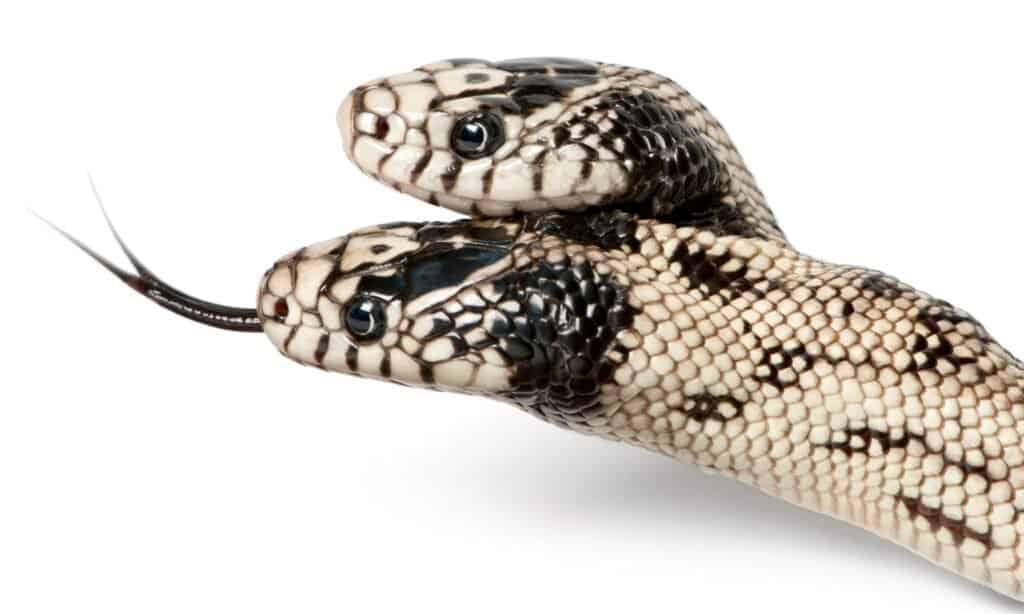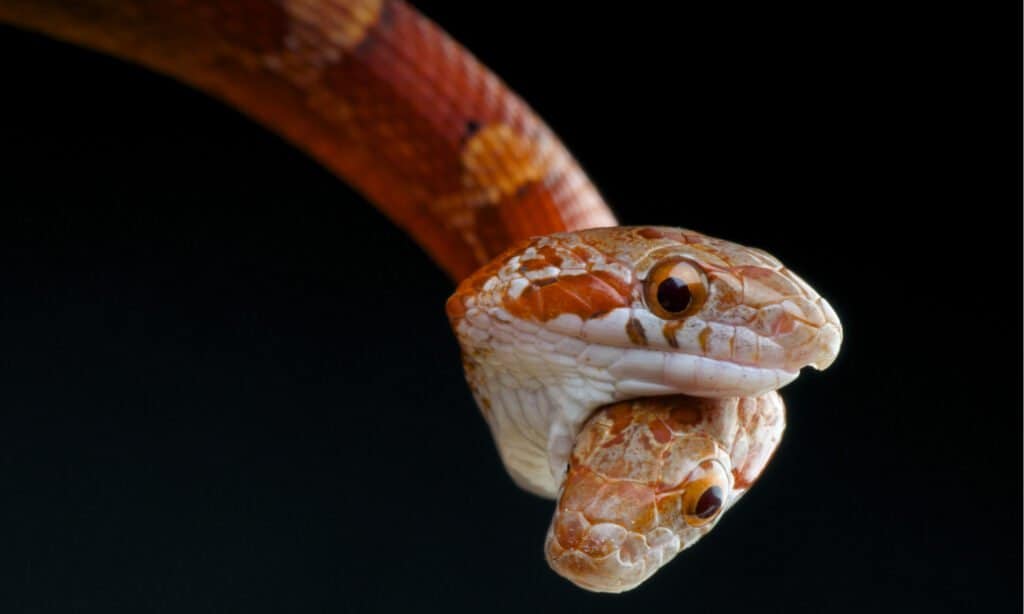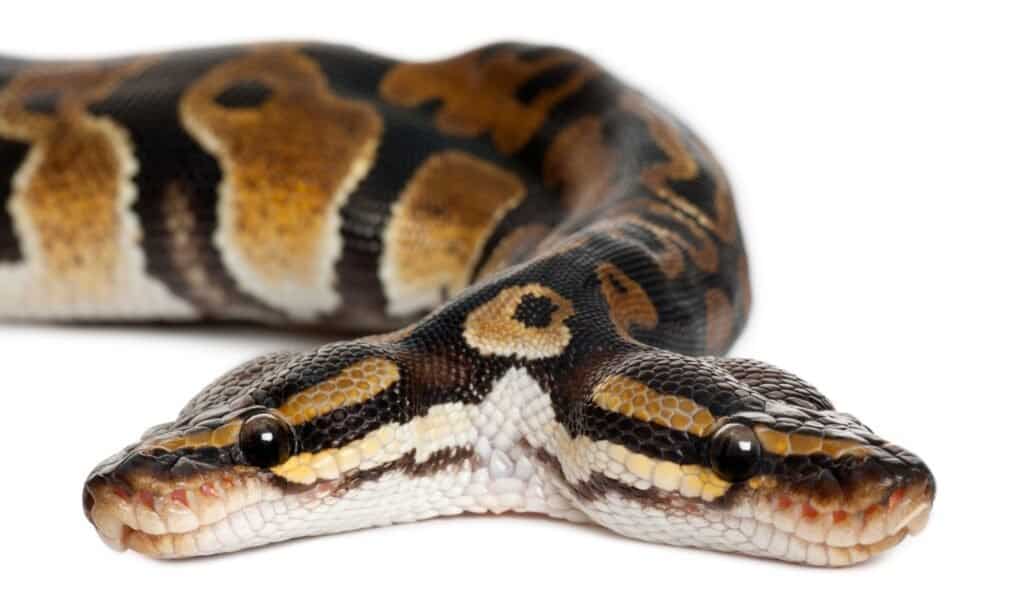This is not a fake video! Two-headed snakes can and do exist although they often do not live for long in the wild. The little female Texas rat snake in this clip, however, has been captured and is taking up residence in a reptile park. Here she will be cared for and will hopefully live a long and happy life. She’d better stop biting the keepers though!
Watch the Incredible Footage Below
What Is a Two-Headed Snake Called?
It is very rare for an animal to be born with two heads but when it happens humans are fascinated by it! The scientific name for this phenomenon is ‘bicephaly’ which is made up of the word ‘bi’ which means two and ‘cephaly’ which means head.

Two-headed snakes are more likely to survive in captivity.
©iStock.com/GlobalP
These days we recognize bicephaly as a physiological anomaly, in ancient civilizations two-headed animals were revered. A two-headed snake was often seen as a symbol of rebirth or of the duality of life and death.
It’s not just snakes that can be born with two heads, it has been recorded in domestic animals such as cattle, pigs, sheep, and goats. It has also been seen in fish, sharks, and turtles. Conjoined human twins have been born with two heads but one torso and one heart.
Can a Two-Headed Snake Survive?

The survival rate for a two-headed snake in the wild is very low.
©reptiles4all/Shutterstock.com
The chance of a two-headed snake occurring is around one in every hundred thousand so why don’t we see more of them? It’s because they rarely survive in the wild. The anatomy of the two heads may make it hard for them to eat. Having two heads will almost certainly get in the way of hunting for food and escaping predators. The heads don’t always cooperate and try to move in different directions!
In captivity, however, the situation is very different. This clip features the skin of a two-headed snake that lived for 12 years. There are other reports of two-headed snakes living in captivity for up to 20 years.
What Causes Bicephaly?

Having two heads is more common among snakes than it is in mammals.
©GlobalP/Shutterstock.com
Bicephaly is more common in snakes than it is in mammals. The snakes may also have two stomachs. It is caused by some form of malformation of the developing embryo(s). It can be an incomplete splitting of a single embryo or it can be an incomplete fusion of two embryos. Either way, this can be triggered by genetic or environmental factors.
Mammals give birth to live young and the mother’s body is very good at detecting abnormalities in the embryo and expelling it before it can develop further. In snakes that lay eggs, the abnormal embryo grows into an individual just like this one!
The photo featured at the top of this post is © reptiles4all/Shutterstock.com
Discover the "Monster" Snake 5X Bigger than an Anaconda
Every day A-Z Animals sends out some of the most incredible facts in the world from our free newsletter. Want to discover the 10 most beautiful snakes in the world, a "snake island" where you're never more than 3 feet from danger, or a "monster" snake 5X larger than an anaconda? Then sign up right now and you'll start receiving our daily newsletter absolutely free.
Thank you for reading! Have some feedback for us? Contact the AZ Animals editorial team.







